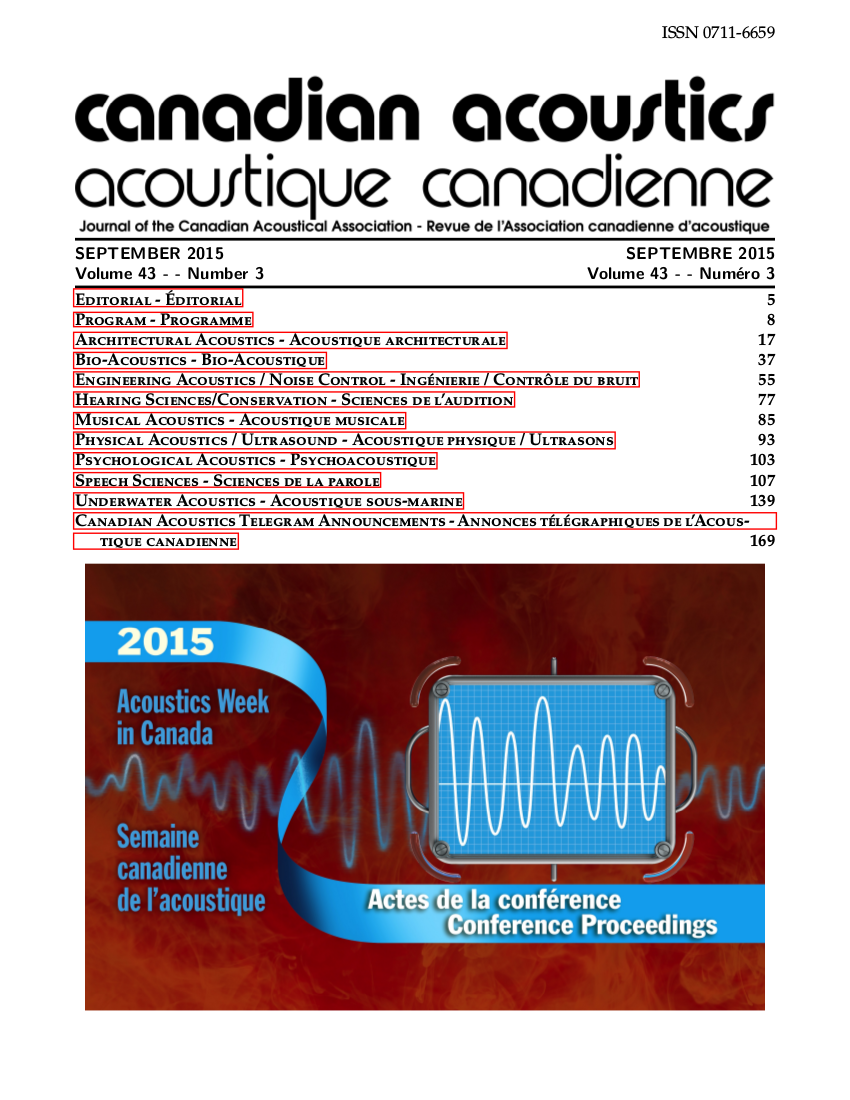The Age-related Strial Degeneration Inhibits the Inner Hair Cell- Auditory Synapse Complex: A Computational Investigation.
Abstract
The Stria Vascularis regulates the electrical potentials inside the mammalian cochlea that are vital for the optimal operation of the ‘cochlear amplifier’. The effects of the age-related deficits of the endocochlear potential (EP) on the outer hair cell (OHC) motile forces have been investigated both theoretically and experimentally. Nevertheless, it is much less known how the age-related EP reduction explicitly affects the sensory inner hair cells (IHCs). This study analyzes the effects of the EP reduction on the IHC membrane potential and thereby the auditory nerve (AN) neurotransmitter release rate. This numerical analysis is performed using a biophysical lumped-element model of the IHC [Lopez-Poveda and Eustaque-Martin, JARO.7, 218-235 (2006)] and a computational model of the human AN [Zilany et al., J. Acoust. Soc. Am.135, 283-286 (2014)] for frequencies from 0.25 to 6 kHz. The hearing threshold was defined as the minimum displacement of the IHC stereocilia which generates a firing on AN fibers with high spontaneous rate. The hearing thresholds were quantified at different frequencies for the healthy cochlea (EP =89 mV). These thresholds were compared to the ones estimated for conditions in which the EP has declined to 25% and 50% of its optimal value, to quantify the corresponding hearing threshold elevations. The results show that the hearing threshold elevations increase as a function of the frequency from 7 dB at 250 Hz to around 25 dB at 6 kHz, consistent with the high-frequency profile of the age-related hearing loss. The presented analysis can help better differentiate between the OHC-related versus the IHC-related hearing threshold elevation in age-related hearing loss.
Additional Files
Published
How to Cite
Issue
Section
License
Author Licensing Addendum
This Licensing Addendum ("Addendum") is entered into between the undersigned Author(s) and Canadian Acoustics journal published by the Canadian Acoustical Association (hereinafter referred to as the "Publisher"). The Author(s) and the Publisher agree as follows:
-
Retained Rights: The Author(s) retain(s) the following rights:
- The right to reproduce, distribute, and publicly display the Work on the Author's personal website or the website of the Author's institution.
- The right to use the Work in the Author's teaching activities and presentations.
- The right to include the Work in a compilation for the Author's personal use, not for sale.
-
Grant of License: The Author(s) grant(s) to the Publisher a worldwide exclusive license to publish, reproduce, distribute, and display the Work in Canadian Acoustics and any other formats and media deemed appropriate by the Publisher.
-
Attribution: The Publisher agrees to include proper attribution to the Author(s) in all publications and reproductions of the Work.
-
No Conflict: This Addendum is intended to be in harmony with, and not in conflict with, the terms and conditions of the original agreement entered into between the Author(s) and the Publisher.
-
Copyright Clause: Copyright on articles is held by the Author(s). The corresponding Author has the right to grant on behalf of all Authors and does grant on behalf of all Authors, a worldwide exclusive license to the Publisher and its licensees in perpetuity, in all forms, formats, and media (whether known now or created in the future), including but not limited to the rights to publish, reproduce, distribute, display, store, translate, create adaptations, reprints, include within collections, and create summaries, extracts, and/or abstracts of the Contribution.


